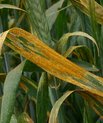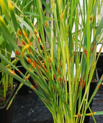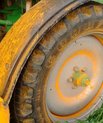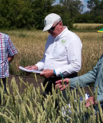News
ARD TV: Pilzbefall von Weizen. Dem gefährlichen Schwarzrost auf der Spur. BR Fernsehen, 12 Min
Race analyses
Submission of wheat rust samples for diagnosis
Please find the guideline: "Sample collection procedure for GRRC race analyses of wheat rusts 2016" here
GRRC annual reports on race phenotyping and genotyping
Please find reports of the Puccinia striiformis genotyping and race analyses activities at GRRC 2010 - 2023:
-
Report of stem and yellow rust genotyping 2022 new 24 May 2023
Definition of yellow rust genetic groups and races
Definition of stem rust genetic groups and races
Sampling site focus in 2023 will be selected by staff at ICARDA, CIMMYT and NARCs in Africa and Asia, with a focus on high risk epidemic areas. GRRC can only process samples according to available space and resources at any time, and we cannot guarantee to process all samples received.





